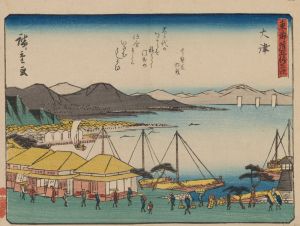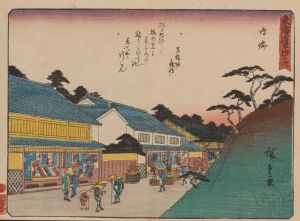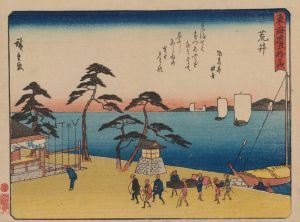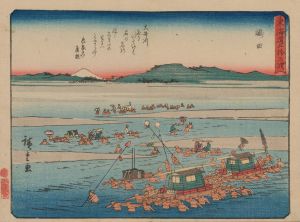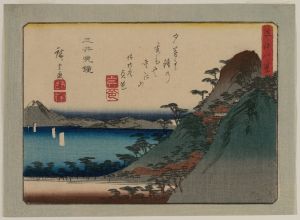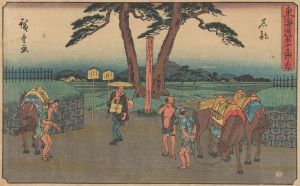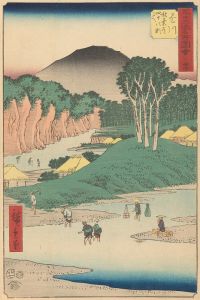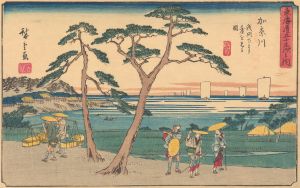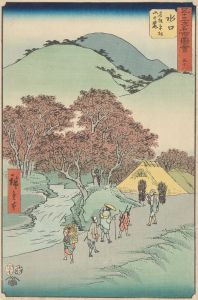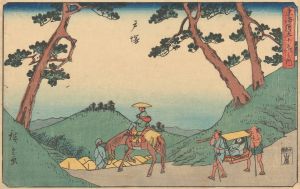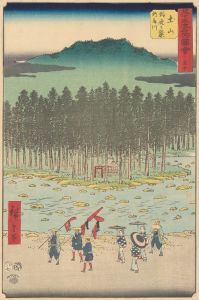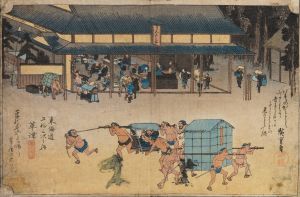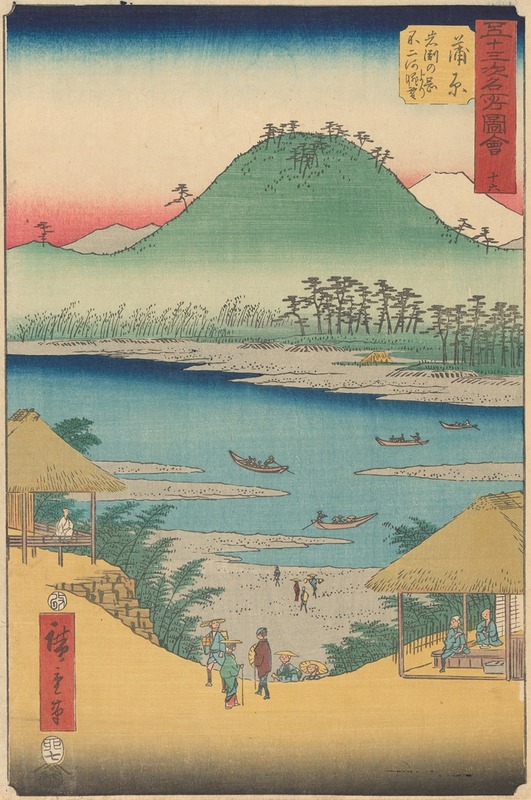
Kanbara
A hand-painted replica of Andō Hiroshige’s masterpiece Kanbara, meticulously crafted by professional artists to capture the true essence of the original. Each piece is created with museum-quality canvas and rare mineral pigments, carefully painted by experienced artists with delicate brushstrokes and rich, layered colors to perfectly recreate the texture of the original artwork. Unlike machine-printed reproductions, this hand-painted version brings the painting to life, infused with the artist’s emotions and skill in every stroke. Whether for personal collection or home decoration, it instantly elevates the artistic atmosphere of any space.
Kanbara by Andō Hiroshige is one of the renowned woodblock prints from the series "The Fifty-three Stations of the Tōkaidō" (Tōkaidō Gojūsan-tsugi no Uchi), which was created in the early 1830s. This series is considered one of Hiroshige's masterpieces and is a significant example of ukiyo-e, a genre of Japanese art that flourished from the 17th through 19th centuries. Ukiyo-e, which means "pictures of the floating world," often depicted landscapes, tales from history, the theater, and the pleasures of city life.
Andō Hiroshige (1797–1858) was a Japanese ukiyo-e artist, and he is best known for his landscape prints. His work had a profound influence on Western artists, particularly the Impressionists, and his innovative compositions and use of color were highly regarded. Hiroshige's "The Fifty-three Stations of the Tōkaidō" series was inspired by his travels along the Tōkaidō road, the main route connecting Edo (modern-day Tokyo) to Kyoto. This road was the most important of the Five Routes of the Edo period in Japan, and it was well-traveled by lords, samurai, merchants, and pilgrims.
The print "Kanbara" is the 16th station in the series and is often noted for its serene and tranquil depiction of a snowy evening. Unlike many other prints in the series that depict bustling post towns or travelers on the road, "Kanbara" captures a quiet, almost ethereal scene. The composition shows a snow-covered landscape with a few figures walking along a path, their heads bowed against the cold. The snow-laden trees and the soft, muted colors contribute to the peaceful atmosphere of the scene.
Hiroshige's use of perspective and his ability to convey the mood of a scene are evident in this print. The simplicity of the composition, combined with the delicate gradations of color, creates a sense of depth and tranquility. The figures in the print are dressed in traditional clothing, and their presence adds a human element to the otherwise stark landscape.
"Kanbara" is often praised for its ability to evoke the quiet beauty of a snowy night, and it stands out in the Tōkaidō series for its minimalist approach. The print exemplifies Hiroshige's skill in capturing the essence of a moment and his mastery of the woodblock printing technique. Each print in the series was created using multiple blocks, one for each color, and required precise alignment to achieve the final image.
The popularity of "The Fifty-three Stations of the Tōkaidō" series helped establish Hiroshige's reputation as a leading artist of his time. His work not only documented the landscapes and culture of Japan but also influenced the development of landscape art in the West. Today, Hiroshige's prints are highly sought after by collectors and are displayed in museums around the world, appreciated for their beauty, craftsmanship, and historical significance.





